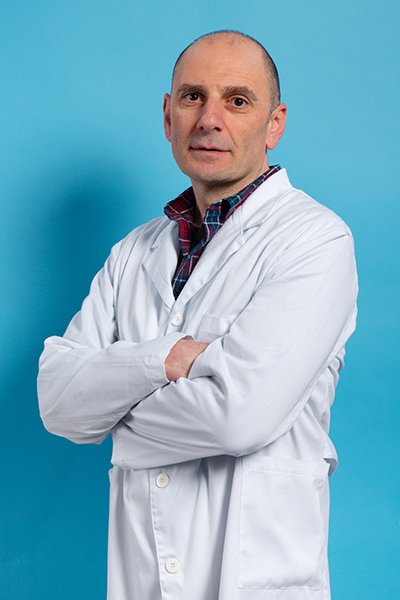In CODRA hospital, within the internal medicine segment, we have a Gastroenterology ward. Within that ward we have outpatient and hospital sections.
Subspecialist examinations, ultrasound examinations and endoscopies (esophagogastroduodenoscopy and colonoscopy) are performed within the ambulatory section.
Patients who have problems with the digestive organs (esophagus, stomach, small and large intestine, liver and pancreas) can be examined by a gastroenterologist and get an ultrasound of the abdomen on the same day, performed by our experienced gastroenterohepatologists using the state-of-the-art ultrasound machine.
.
A classic ultrasound examination of the abdomen provides a detailed insight into the size and structure of the parenchymatous organs: liver, spleen, pancreas, biliary system (gallbladder and bile ducts). By using this method, the abdominal part of the aorta can be visualized. It is an effective method in detecting and monitoring various diseases of the abdominal organs, such as: congenital anomalies, inflammatory and tumor changes, the presence of free fluid in the abdominal cavity, injuries.
NEW By using the ultrasound machine RS85 Prestige, which in Montenegro you can find only in CODRA, you can determine the degree of liver hardness ( shear wave elastography).

It is a non-invasive, completely safe procedure, which confirms or excludes advanced fibrosis or cirrhosis of the liver. In this way, a liver biopsy is avoided, which is invasive and not risk free.
Within the outpatient section, there is an endoscopy cabinet equipped with endoscopic procedures that examine the esophagus, stomach and duodenum (“gastroscopy”), as well as the large intestine with insight into the final part of the small intestine (“colonoscopy”).
Endoscopies are performed on a state-of-the-art endoscopy device manufactured by Pentax, which, thanks to the special “I-SCAN” software, enables early detection of all types of precancerous changes on the mucous membrane, which sometimes cannot be seen using only ordinary lighting. Photos and, if desired, video recordings are available to all patients, confirming the endoscopic reports. In addition to diagnostic endoscopies, therapeutic endoscopies are also available to patients every day (removal of polyps, stoppage of bleeding, expansion of narrowing in the digestive tube, placement of feeding holes on the front abdominal wall).
All endoscopic examinations are performed under anesthesia.
In the near future, the range of endoscopic services will be extended to the treatment of angiodysplasias (enlarged blood vessels in the intestinal mucosa, which are often the cause of anemia) using argon plasma coagulation.
Esophagogastroduodenoscopy
Gastroscopy is a endoscopic examination of the upper part of the gastrointestinal (GI) tract, which includes the esophagus (part of the digestive system, where swallowing takes place), the stomach, and the duodenum (duodenum). The abbreviation of the name is EGDS. It is performed with an endoscopic instrument – an endoscope, which has the form of a flexible long tube, with a video camera on top. During gastroscopy, it is possible to take tissue samples for biopsy, or perform certain treatments (such as dilation, removal of polyps, treatment of bleeding).

Colonoscopy
A colonoscopy is an endoscopic procedure, which allows the insight in the interior condition of the entire large intestine and the final part of the small intestine. Colonoscopy is performed with an endoscopic instrument – a colonoscope, which has the form of a flexible long tube, with a video camera on top. It is done with a view to diagnosing inflammation of the mucous membrane and pathological changes in the large intestine, and it can also be done for therapeutic purposes (removal of polyps). During the colonoscopy, a sample (biopsy) can be taken from the suspicious abnormal tissue, which is sent for histopathological analysis.
Therapeutic colonoscopy is used to: remove polyps, stop bleeding, widen narrowing in the digestive tube, place a feeding hole on the front abdominal wall…).
If necessary, patients can be hospitalized. During their stay in comfortable, modernly equipped hospital rooms, patients are given the necessary diagnostics and therapy determined by a multidisciplinary team, which includes not only gastroenterohepatologists, but also specialists in other areas of internal medicine such as surgeons, anesthesiologists, if needs be.
Treatments
- Gastroenterological examination
- Gastroscopy
- Colonoscopy
- Anosigmoidoscopy
- Polypectomies
- Passage of the small intestine
- MSCT of the abdomen
- Laboratory analyzes (biochemistry, tumor markers)


